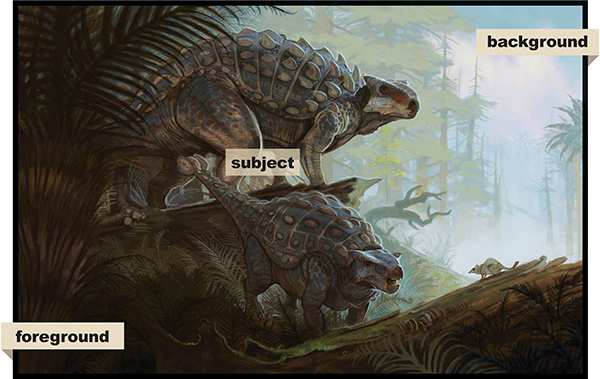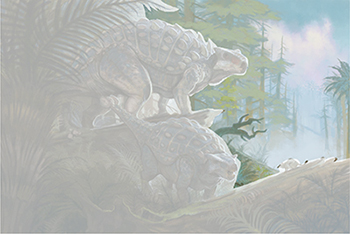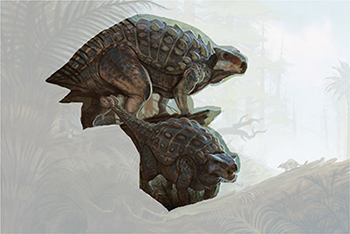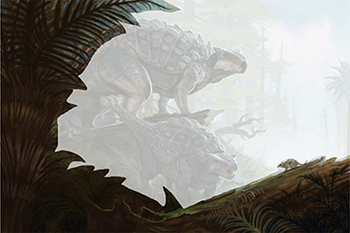
There are three basic elements to creating believable nature scenes of paleoart: the background, the subject and the foreground. In each of the demonstrations in this book these three key aspects are used to create believable images, depth and the illusion of the space. All of the images are from “human perspective.” The horizon line and point of view are roughly the same as if you were standing there observing the dinosaurs in their habitat.


The background landscape should illustrate a broad environmental ecosystem that the dinosaur would live in, whether mountains, forest, desert, jungle or seashore. The background should establish the weather, lighting, time of day and overall world in which each dinosaur lived. Search online for visual reference of landscapes, or even better, explore nature to take your own photos. Drawing en plein air will also give you a better sense of the natural environment.

The subject of each diorama is the dinosaur itself, whether alone or in a group, and is the focal point of your nature scene. For this element, you will need to gather a great deal of dinosaur anatomy reference. The dinosaur does not belong in the center of the design, but should be central in the overall composition. Placement of the dinosaur is crucial. Try to position the dinosaur so that it is interacting with its environment, whether looking off into the background or moving into the foreground. This will help enhance the illusion of space and depth.

The placement of a foreground element in the design helps frame the composition. Including rocks, plants and small animals in the foreground adds believable detail and helps scale the drawing. This framing technique also helps set the dinosaur more naturally into the landscape. Try to carry the details of the background into the foreground. For instance, if there are palm trees in the background, litter the foreground with fallen dried palm fronds.